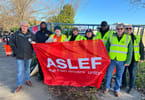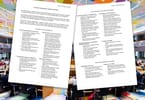It appears to be open season on Boeing, the FAA, the Japanese regulators, airlines, and anyone else who dares be part of the 787. Fair enough. The airplane does have a significant flaw, and the more tests that are done, more of the likely (and easy) suspects are eliminated. This alone should give some pause before haranguing against a failed or corrupt system. If knowing where to look after two major incidents, all of these folks remain flummoxed for a solution, there is probably a valid defense to be made for the thoroughness of the original certification process. And, unlike the Comet, the Electra, and the DC-10, the problem emerged before the landscape was littered with bodies.
Perhaps one of the simplest explanations for the now evident misfire is that unlike many of its predecessors, the 787 incorporates multiple new systems and materials, as well as a unique buy-the-kit-and-build-it construction plan. One might ask, and many have, whether or not the regulatory process was up to the challenges that appeared in a single package. As we all know, aviation is a collaborative exercise, comprised of airlines, manufacturers, airports, governments, politics, regulators, and consumers. All these moving parts do not necessarily evolve at the same speed, and that variation of progress can result in messy outcomes.
I have flown the 787 and found it to be a lovely aircraft that lives up to much of its hype. However, it is not a to-die-for experience, and the obvious failures need to be resolved. But, with the A350 soon to fly, the days of the metal airplane are on the wane and that aircraft will add an additional dimension to this change process.
I do not wish to be seen as an apologist for the 787. Something is clearly wrong and needs to be addressed before it flies again. But many appear to have lost the concept that people and designs can be fallible in ways that are neither evil nor shortsighted – we just didn’t know in advance, despite our best efforts. And what we have now is a big mess desperately in need of a fix. While blame may at some point be a valid response, thus far the people and companies involved have done the right thing and no one has been hurt.
So we need to wish those well who are working around the clock to find a fix and once that is identified, the certification process needs to be worked backwards and improved at those points where it proved deficient. There are no obvious bad guys here, some who perhaps overreached and others who failed to find a glitch, but it is through that process that we as humans have continued to innovate, and will continue to do so.
WHAT TO TAKE AWAY FROM THIS ARTICLE:
- So we need to wish those well who are working around the clock to find a fix and once that is identified, the certification process needs to be worked backwards and improved at those points where it proved deficient.
- There are no obvious bad guys here, some who perhaps overreached and others who failed to find a glitch, but it is through that process that we as humans have continued to innovate, and will continue to do so.
- If knowing where to look after two major incidents, all of these folks remain flummoxed for a solution, there is probably a valid defense to be made for the thoroughness of the original certification process.






















